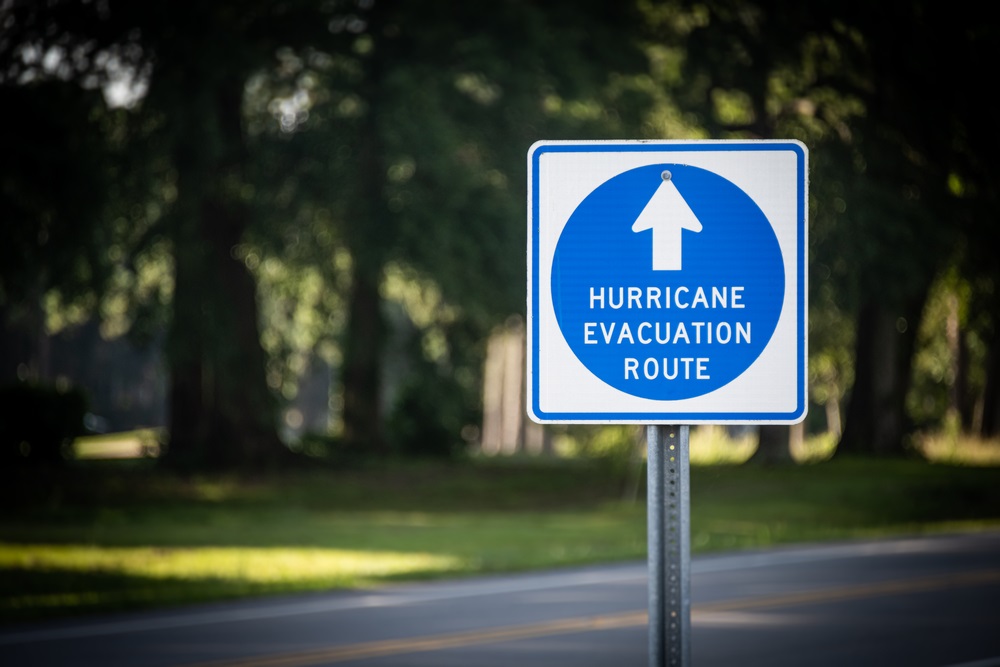
In a contraflow system, vehicles travel along lanes in the opposite direction to the normal flow of traffic. It is a remarkably effective evacuation strategy since it significantly increases the directional capacities of roadways without incurring the additional resources required in planning, designing, and constructing additional lanes.
The system, which was first implemented in 1999, has been widely used as an evacuation method across southeastern states that are constantly under hurricane threat. Given its well-documented success during Hurricane Katrina, it has now become the go-to preparedness measure for other large-scale hazards.
Contraflow systems are commonly used on freeways since they are designed for high-speed, high-capacity operation. With that in mind, here’s everything you need to know about the I45 contraflow, as well as the hurricane evacuation procedures you need to keep in mind during impending emergencies.
Texas Hurricane Evacuation
The Texas Department of Transport – TxDOT – has come up with a series of hurricane evacuation procedures, one of which includes the I45 contraflow plan.
This hurricane evacuation route affects any motorist evacuating from the greater Houston region. It is designed to help citizens move safely and efficiently out of harm’s way during a large-scale evacuation.
Once the plan is put into motion, two of the I-45 southbound lanes will be used to carry northbound traffic. These contraflow lanes will be able to exit the freeway at specific predefined locations.
The Houston contraflow lanes will only be enforced when mandatory evacuation directives are issued and if there’s a major hurricane threat looming over the area. This decision to reverse traffic on I-45 can only be made by the Texas Department of Public Safety – TxDPS – depending on the category of the storm and expected landfall.
The hurricane evacuation zones will start at the Montgomery/Walker County line, at which point some of the traffic headed north will cross over to the contraflow lanes on the southbound side of the freeway.
There will be multiple access points to fuel stations for both contraflow traffic as well as other I-45 motorists. I-45 contraflow lanes will terminate at US 287, 40 miles south of Dallas, near Ennis, TX.
Hurricane Evacuation Procedures
When choosing the ideal timing of your evacuation, one of the most important things you need to keep in mind is your wellbeing and that of your family. If you need to evacuate, plan to do it as soon as possible. Don’t wait for the contraflow lanes to be activated before you do.
Should the contraflow lanes be activated, watch and listen to the local television and radio stations for information on the Houston hurricane evacuation zones and prepare a departure plan well in advance.
Additionally, consider taking the following steps as well.
1. Put Together Your Emergency Supplies
There’s no such thing as being “too prepared.” Ensure your disaster supplies kit contains everything you might need in an emergency. Some must-haves include food, water, medical supplies, a first aid kit, a portable radio, battery chargers, extra batteries, cell phones, and flashlights. You should also consider carrying a highway map and critical documents such as medical and insurance information.
2. Secure Your Home
Do everything you can to protect your home by securing it against disaster. This includes covering up your windows with shielding materials and securing any loose objects. If you can’t secure them, put them away entirely to mitigate any potential falling hazards.
3. Make Sure Your Pets Are Safe

Don’t leave your pets behind. Take them with you to safety since they can’t fend for themselves. If, for any reason, you’re unable to take them with you, ensure you make adequate provisions for them to keep them out of harm’s way.
4. Top Up Your Gas Tank
You’ll want to fill up your car with gas as early on as you can. Avoid any last-minute rush for fuel that could potentially waste precious time. Be sure to take a vehicle that’s big enough to transport you and all the members of your family. Leave all the other vehicles behind or park them somewhere safe at the very least. Having too many cars on the road creates unnecessary congestion.
Additionally, make a point to study the evacuation plan and routes beforehand. There’s no sense in leaving home if you don’t even know where you’re headed to. Keep an eye out for a hurricane evacuation sign at various strategic spots along the highway, guiding you on the appropriate route to take.
5. Carry Extra Cash With You
There’s no guarantee that banks will be open during the evacuation period. You never know – that might also be the day that ATMs stop working. The whole point of emergency preparedness is to plan for any eventuality. Always bring extra money with you (specifically in cash) in case of anything.
6. Create an Emergency Plan
One of the worst things that can happen in a crisis is getting separated from your family members. It can be nerve-racking, especially in the midst of a looming hurricane. If this happens, ensure each of your evacuating family members has the name and contact information of the designated family or friend in whose home you intend to seek shelter. Instruct everyone to make their way there even if you’re not all together during the evacuation.
7. Educate Your Children
Ensure you train your kids in emergency drills and procedures. This is particularly important if you live in a hurricane-prone area. Teach them from early on what they need to do and how and when to call 911. It’s never too early for them to learn some basic survival skills.
8. Take Into Account Travel Times
During a hurricane evacuation, everyone in your area will likely be on the road at the same time. This means that you’ll probably encounter traffic and delays while traveling to your out-of-area destination. You’ll need to keep that in mind when estimating travel times.
9. Wait for the Go-Ahead
Finally, the roads can get a little crazy during emergencies. Evacuate safely to ensure you reach your destination in one piece. Don’t attempt to drive through standing water. Even a few inches of it is enough to float your car. Once the storm passes, don’t return home until you get the green light from the local authorities.
Stay Safe and Alert
For more information on hurricane preparedness and evacuation, visit the TxDOT website, the TxDPS website, and the Governor’s Division of Emergency Management website.
In the meantime, check out our blog for status updates on the I-45 expansion.

